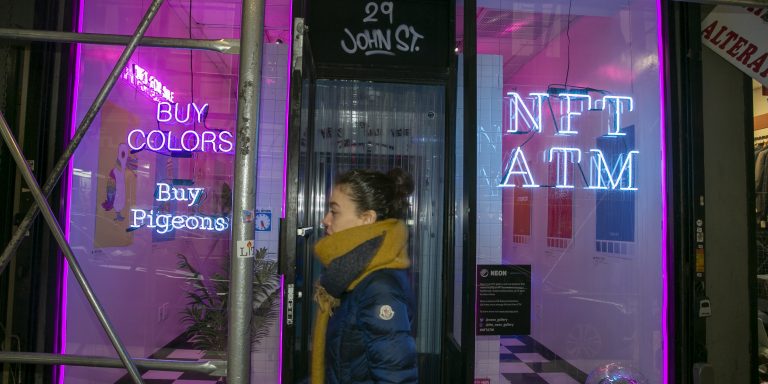INTELBRIEF
September 16, 2022
IntelBrief: Non-Fungible Tokens (NFTs) are Now Funding Terrorists (NFTs)

Bottom Line Up Front
- Concern is rising among regulators that non-fungible tokens (NFTs) may be used by illicit actors to circumvent sanctions and to launder the proceeds of their various criminal activities.
- NFTs have been minted by conspiracy theorists and purveyors of disinformation simultaneously as an explosion of NFTs as an art-form and commodity has increased in popularity amongst the greater public.
- This month, a pro-ISIS supporter minted an NFT that glorified an Islamic State Khorasan (IS-K) attack in Afghanistan, making it the second U.S. designated terrorist group to experiment with NFT, along with the Russian Imperial Movement (RIM).
- NFTs will continue to interest terrorist groups and their sympathizers due to unique characteristics that can insulate purveyors from law enforcement and regulatory measures.
Non-fungible tokens (NFTs) are a type of digital commodity, often art, that are purchased with cryptocurrency. The enthusiasm behind NFT's rapid expansion, especially since 2021, is a result of its highly decentralized and difficult-to-regulate nature and a passion among legitimate actors to acquire unique forms of art that are more accessible to a wider range of art collectors. While NFTs are often legitimately exchanged between collectors, there is growing concern that a range of bad actors, including violent extremists, may try to profit, espouse propaganda, or tout battlefield victories over the various platforms where NFTs are sold. Two platforms, Opensea and Rarible, have had NFTs minted by conspiracy theorists and terrorists. Although the vast majority of assets are being sold legally, a February 2022 report by the U.S. Department of the Treasury expressed concern that NFTs could become a source for money laundering.
The Department of the Treasury’s concerns were warranted. Conspiracy theorists have utilized NFTs and peddled their January 6 fantasies over platforms like Opensea. The looming challenges associated with ensuring bad actors do not exploit NFTs in the future will become more difficult as digital art becomes increasingly popular. Heading in September 2022, NFTs had a market value somewhere in the range between $50 and $150 million, with demand rapidly increasing, although this could ebb with the onset of a global recession. Accordingly, the situation makes it difficult for regulators to keep up with the increasing use of NFTs and future uncertainties in a volatile economy. According to the Wall Street Journal, ISIS became the ‘first’ terrorist group to create an NFT over Rarible; however, ISIS was not the first U.S. designated terrorist group to attempt selling an NFT. Yet, ISIS’s experiment is particularly troubling because the NFT created by the ISIS sympathizer fused a desire for accruing finance, disseminating propaganda, and glorifying IS-K attacks in Afghanistan. NFTs pose a particular, persistent challenge to removing ISIS-created content (or any other bad actor content) because NFTs can be bought and sold privately – ultimately making it difficult for the public to flag problematic content. Additionally, since NFTs are stored on a peer-to-peer complex file sharing system known as the InterPlanetary File System that is distributed among internet nodes, removing the content is a formidable challenge.
At its zenith, ISIS effectively used social media to reach a global audience. ISIS’s fast-moving videos, acerbic tweets, and gruesome Facebook posts attracted a wide range of disaffected youths to Syria and Iraq. Some, especially many Western foreign fighters, were intrigued by the pulp-fiction gore ISIS peddled online. NFTs can create similar visuals and potentially attract new nihilists and religious extremists to the ISIS cause. NFT platforms, however, lack content moderation, and the tech behind NFTs is not conducive to content removal like major social media companies could later carry out against ISIS. Further, ISIS is not the only terrorist group considering NFTs to further financial or political objectives. Prior to ISIS, the U.S. designated terrorist group, the Russian Imperial Movement (RIM), reportedly created an NFT over OpenSea. In July, Kharon, a data analytics company, noted in a July 2022 report that a RIM supporter minted a series of NFTs to support the Russian war effort in Ukraine – making RIM the first U.S. designated group known to have created an NFT to circumvent U.S. sanctions. ISIS would become the second group to do so.
Terrorist groups will continue to exploit online tools to accrue wealth. Indeed, ISIS’s and RIM’s experimentation in the NFT space was inevitable. Like the recent use of cryptocurrency to raise and store funds, the pseudo-anonymity, audience reach, and plausible deniability NFTs can provide are incredibly attractive attributes for a range of violent non-state actors. NFTs, like other online financing mechanisms, also obviates the need for terrorist facilitators and financiers to meet in the physical world – making it more challenging for law enforcement to identify, arrest, and prosecute those benefiting from illicit NFT sales. Moreover, the use of such online financing mechanisms could further complicate cohesive, multilateral responses in an evolving threat landscape, which has become increasingly diffuse and localized. As such, recent experimentation by terrorists to use NFTs should not come as a surprise, and ISIS and RIM’s summer of NFT activity is likely a harbinger of things to come.